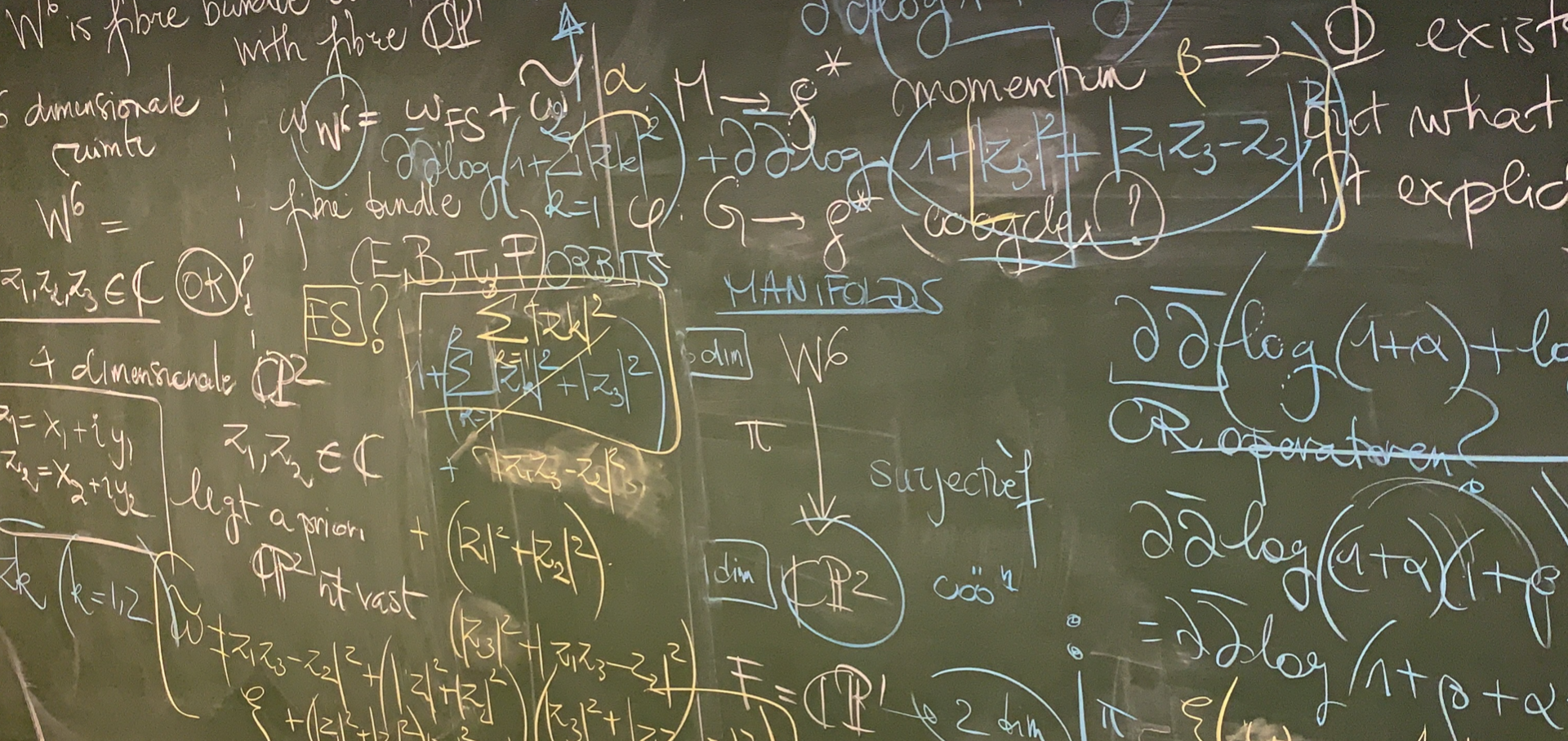
Research interests & Publications
The symplectic Fueter theorem - Joint work with D. Eelbode & S. Hohloch (2020)
In this paper we present a symplectic analogue of the Fueter theorem. This allows the construction of special (polynomial) solutions for the symplectic Dirac operator \(D_s\), which is defined as the first-order \(\mathfrak{sp}(2n)\)-invariant differential operator acting on functions on \(\mathbb{R}^{2n}\) taking values in the metaplectic spinor representation.
The orthogonal branching problem for symplectic monogenics - Joint work with D. Eelbode (2021)
In this paper we study the \(\mathfrak{sp}(2m)\)-invariant Dirac operator \(D_s\) which acts on symplectic spinors, from an orthogonal point of view. By this we mean that we will focus on the subalgebra \(\mathfrak{so}(m) \subset \mathfrak{sp}(2m)\), as this will allow us to derive branching rules for the space of 1-homogeneous polynomial solutions for the operator \(D_s\) (hence generalising the classical Fischer decomposition in harmonic analysis for a vector variable in \(\mathbb{R}^m\)). To arrive at this result we use techniques from representation theory, including the transvector algebra \(\mathcal{Z}(\mathfrak{sp}(4),\mathfrak{so}(4))\) and tensor products of Verma modules.
Point vortex dynamics on Kähler twistor spaces - Joint work with S. Hohloch (2023)
In this paper, we provide tools to study the dynamics of point vortex dynamics on \(\mathbb{CP}^n\) and the flag manifold \(\mathbb{F}_{1,2}(\mathbb{C}^3)\). These are the only Kähler twistor spaces arising from 4-manifolds. We give an explicit expression for Green’s function on \(\mathbb{CP}^n\) which enables us to determine the Hamiltonian H and the equations of motions for the point vortex problem on \(\mathbb{CP}^n\) . Moreover, we determine the momentum map \(\mu :\mathbb{F}_{1,2}(\mathbb{C}^3)\to \mathfrak{su}^(3)\) on the flag manifold.
In this paper we will study both the finite and infinite-dimensional representations of the symplectic Lie algebra \(\mathfrak{sp}(2n)\) and develop a polynomial model for these representations. This means that we will associate a certain space of homogeneous polynomials in a matrix variable, intersected with the kernel of \(\mathfrak{sp}(2n)\)-invariant differential operators related to the symplectic Dirac operator with every irreducible representation of \(\mathfrak{sp}(2n)\). We will show that the systems of symplectic Dirac operators can be seen as generators of parafermion algebras. As an application of these new models, we construct a symplectic analogue of the Rarita-Schwinger operator using the theory of transvector algebras
In this paper we use the canonical complex structure \(\mathbb{J}\) on \(\mathbb{R}^{2n}\) to introduce a twist of the symplectic Dirac operator. This can be interpreted as the bosonic analogue of the Dirac operators on a Hermitian manifold. Moreover, we prove that the algebra of these Dirac operators is isomorphic to the Lie algebra \(\mathfrak{su}(1,2)\) which leads to the Howe dual pair \((U(n),\mathfrak{su}(1,2))\).
Branching symplectic monogenics using a Mickelsson-Zhelobenko algebra - Joint work with D. Eelbode (2022)
In this paper we consider (polynomial) solution spaces for the symplectic Dirac operator (with a focus on 1-homogeneous solutions). This space forms an infinite-dimensional representation space for the symplectic Lie algebra \(\mathfrak{sp}(2m)\). Because \(\mathfrak{sp}(m) \subset \mathfrak{sp}(2m)\), this leads to a branching problem which generalises the classical Fischer decomposition in harmonic analysis. Due to the infinite nature of the solution spaces for the symplectic Dirac operators, this is a non-trivial question: both the summands appearing in the decomposition and their explicit embedding factors will be determined in terms of a suitable Mickelsson- Zhelobenko algebra.